Paso Robles wine: California’s “other” wine center gaining ground on Napa and Sonoma
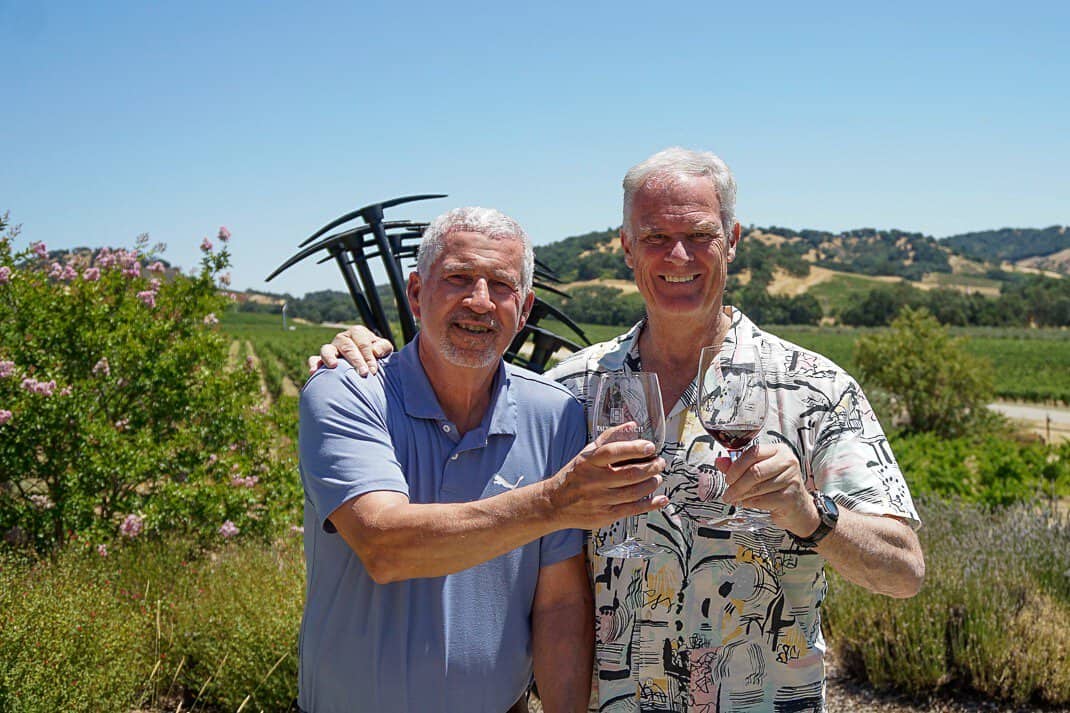
(This is the third of a four-part series on my recent visit to the United States.)
PASO ROBLES, Calif. – A giant H greeted us as we walked into the big winery with the stone entryway. On a steaming, hot day in the 90s just off the Central California coast, the air-conditioner felt as refreshing as a dip in the nearby Pacific Ocean.
Or a glass of California white wine.
The three most highly rated wine countries in the world are Italy, France and the United States. California produces 80 percent of all American wine. After living in Italy for 10 years and waving the Italian wine flag wherever I go in the world, visiting California wineries felt a bit like sleeping with the enemy.
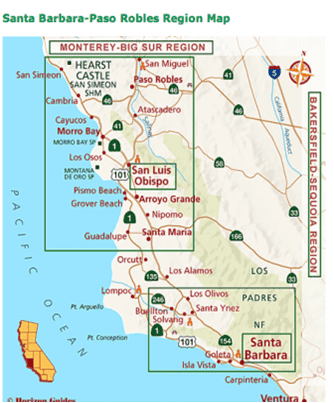
I’ve always had two beefs with California wine and not just because I’ve helped keep Italian wineries alive for the last decade. One, they use too many sulfites and preservatives, the ingredients that help produce headaches; two, they’re so expensive, California banks should give out wine loans.
However, holy mother of God are they good.
My drinking buddy since the ’80s
During last month’s 11-day visit to the United States, I attended my nephew’s wedding outside San Luis Obispo, California, about halfway between San Francisco and Los Angeles on the Central Coast.
The next day I joined an old friend from our days working for rival newspapers in Las Vegas in the ‘80s. John Schumacher, 67, and I would spend days in Vegas trying to beat the crap out of each other in the paper and then drink and chase women at night. It was a friendly rivalry. We had a lot in common: journalism, alcohol, involuntary celibacy.
Since then he has gone from sportswriter to a mental health program coordinator to wine aficionado upon retirement. For the last nine months he has worked part time as a tasting room associate at Mount St. Joseph winery in Granite Bay, outside Sacramento where he grew up.
Unlike most sportswriters, he knows Chardonnay is not a relief pitcher for the Mets. He knows his stuff. In different hemispheres, we developed a common interest in wine during our retirement.
He and his wife Lisa picked Marina and me up at our San Luis Obispo hotel and drove 30 miles north to Paso Robles. It’s a pleasant town of 30,000 nestled in rolling hills and known for hot springs, hosting the California Mid-State Fair and, recently, some of the best wineries in California.
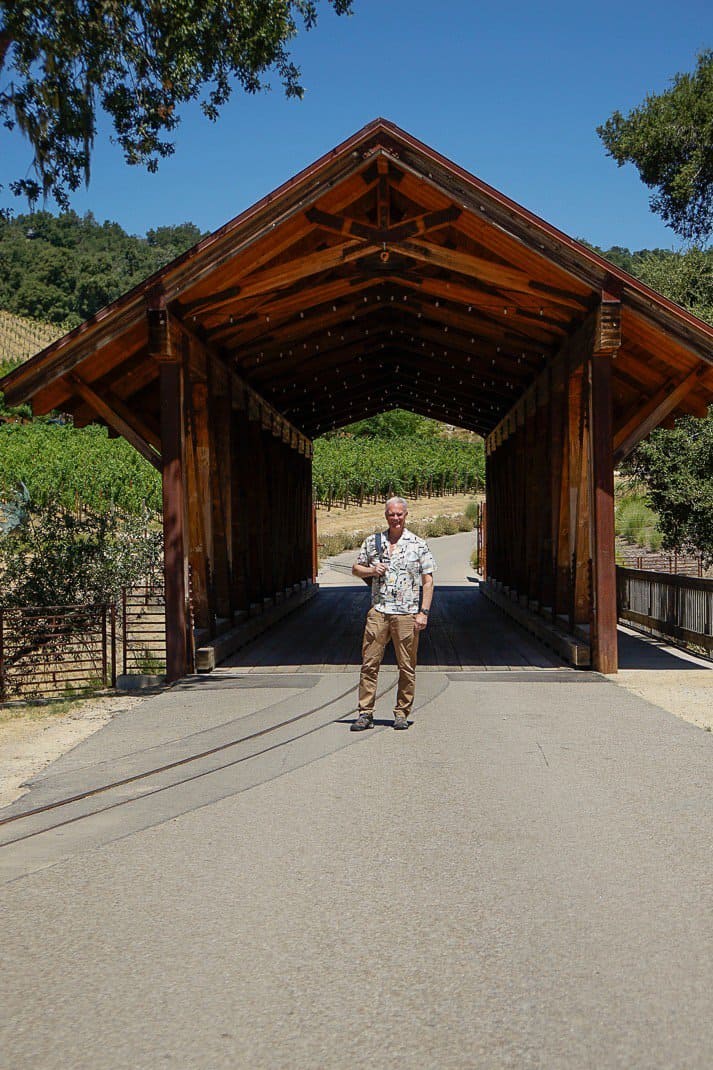
Why Paso Robles wine?
Don’t feel dumb if you love wine and haven’t heard of Paso Robles. Napa and Sonoma County, California, have dominated the American wine scene for so long, other wineries have had a tough time being heard. Even the hit 2004 film, Sideways, didn’t help Santa Barbara wineries make a dent in Napa and Sonoma, although the film did jack up the price of Pinot Noir in my home state of Oregon.
Paso Robles, however, is starting to make some noise. Blessed with a cool coastal climate and extraordinarily fertile soil, Paso Robles now has about 300 wineries, many opening in the last 10 years.
The one with the giant H, Halter Ranch, opened in 2016. The scenery makes me think it had first choice of real estate. The tasting room’s giant picture windows look out over 200 acres of vineyards backed by rolling hills. On one of the hills is what the winery claims is the oldest and largest coastal oak in the world, dating between 650-750 years old.
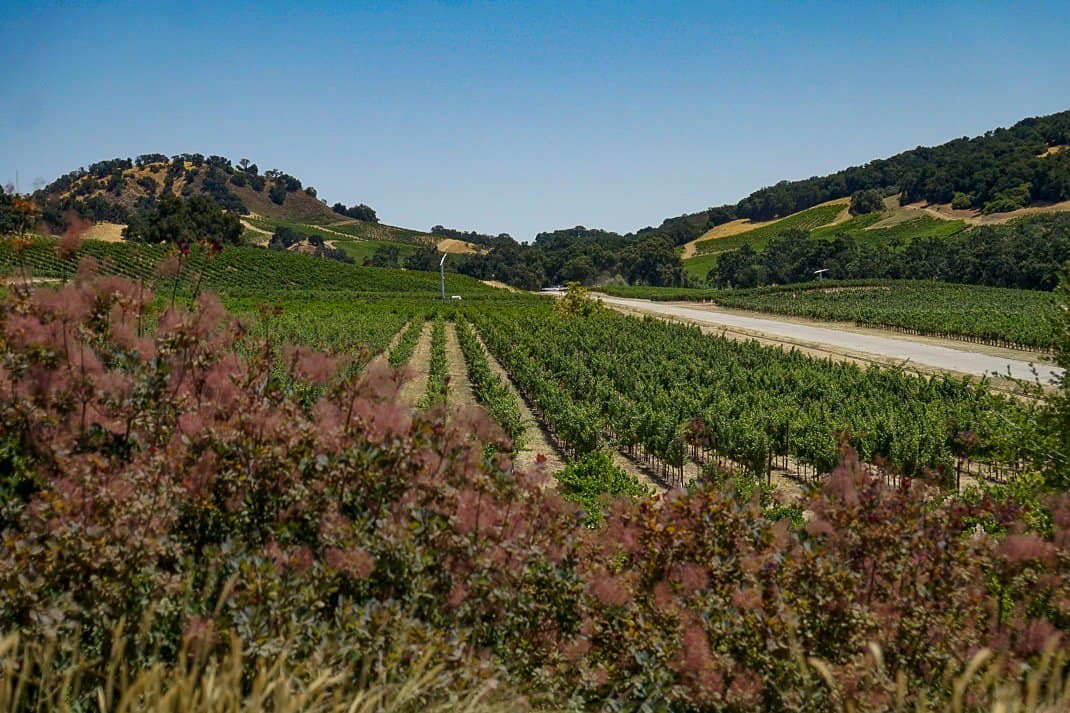
Halter Ranch
Halter Ranch has two tasting flights: Ranch Flight for $35 and Silver Flight for $50. My American friends warned me of sticker shock on wine around the U.S., but the price still jarred me. I am used to Rome where 30 wineries would gather in two hotel ballrooms and charge me €20 to taste wine from Sicily to Alto Adige.
I looked at Halter Ranch’s wine-by-the-glass list. The cheapest was a 2022 Viognier for $13. It rose quickly to $26 for a 2021 Cùvee Alice. Bottles ranged from $37 for a 2023 rose to $147.99 for a 2021 Block 22 Syrah. Forget ITA Airways’ ridiculous baggage limitations. I couldn’t afford to bring a bottle home, let alone pack it.
But then I read about Napa and Sonoma. According to the 2023 Direct Consumer Wine Survey, last year the average reserve tasting in Napa County was $128. A standard tasting was $81. The average retail price of a bottle of Napa wine was $108. Which begs one question.
How does one drink wine in Napa County while bending over?
A little digging found some winery tastings in the $50 range, similar to Paso Robles which has risen in status to just below Napa-Sonoma. So have the prices but the strategy is to be more economically attractive than their northern rivals.
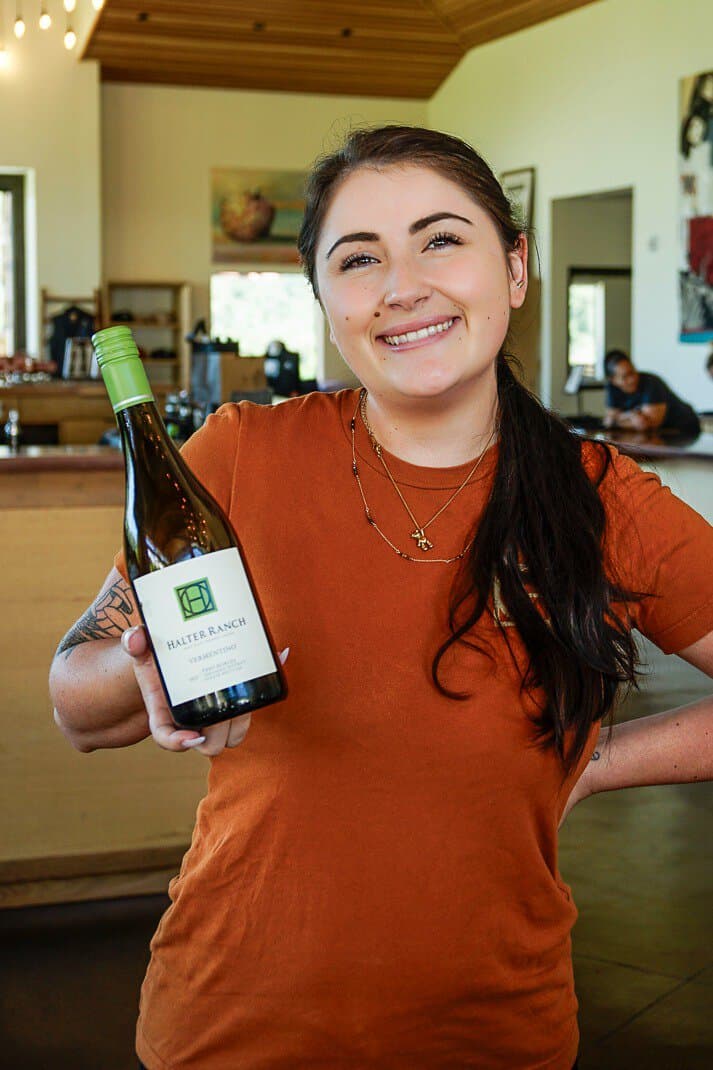
“We’re trying,” said Madi Shriver, our server who’d been working at Halter Ranch for 15 months. “It has gone up but our farming practices have changed quite a bit. A lot of local wineries are looking at more organic and sustainable farming practices. With that comes a lot higher bottle price because a lot more is going into the back end of our farming. We keep it cost effective but not put ourselves under.”
It’s hard understanding that I live in the leading wine producing country in the world and I can go around the corner to my little wine store and I can buy Montepulcianos, Chiantis and Pinot Grigios, among others, for under €15. Half liters of house Pecorino in small trattorias can be had for €7.
John, the good journalist that he still is, has researched and found wines that haven’t forced him back to covering high school football games.
“You can find really good wines between $20-$40 as opposed to spending $80-$100,” he said. “I’m a big believer in value of wines. Would you rather have three bottles of a $25 bottle of wine that you enjoy or rather a $75 or $80 bottle?”
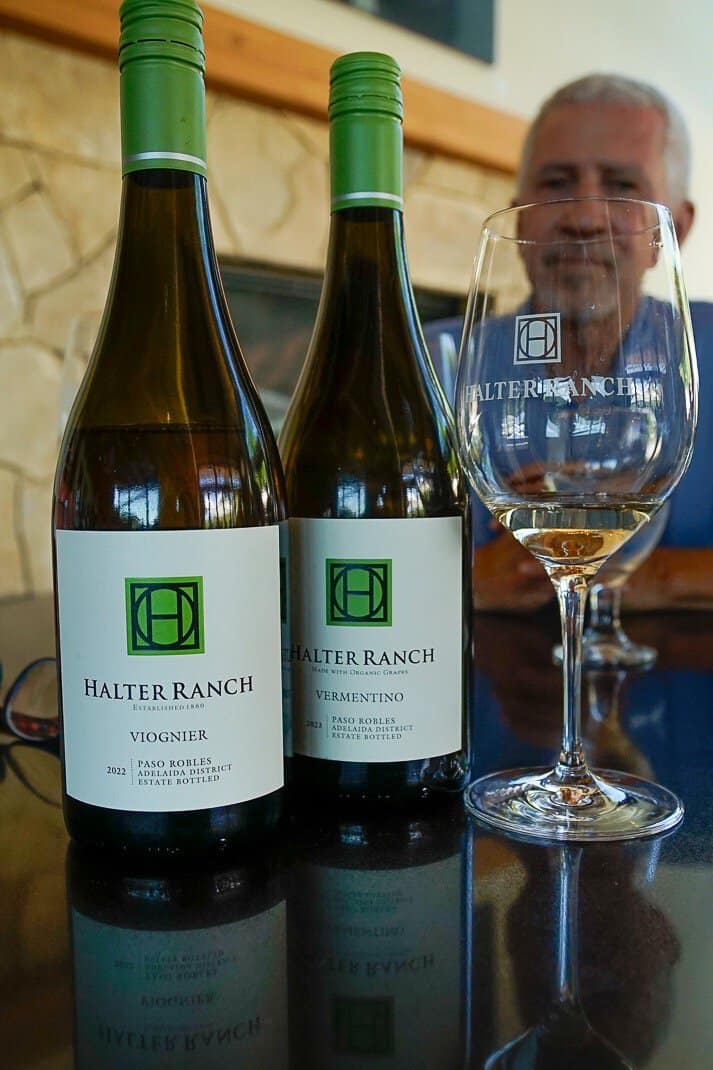
At least you’re getting what you pay for. The wines we had were excellent. California wines have won too many international awards to count. I remember my first stint in Rome in 2001-03 when Gallo of California took its cache of awards and tried selling in Italy. It didn’t work. They were too expensive.
I paid $35 for five tastings on the Ranch Flight and its 2023 Vermentino was luscious. It’s 100 percent Vermentino grape, an easy grape to grow and grown in many regions in Italy. Halter Ranch’s was light but fruity with a distinct taste of nectarines. It seemed like a relative steal at $45 a bottle.
I also liked the 2020 CDP, its top-selling red wine, a blend of 70 percent Grenache, 15 percent Syrah, 13 percent Mourvédre and 2 percent Tannat. Big cherries and pomegranates. Great with BBQ, they said.
And the $85 2020 Ancestor tasted expensive. A blend of Cabernet Sauvignon, Petit Verdot and Malbec, it tasted like liquid raspberry jelly.
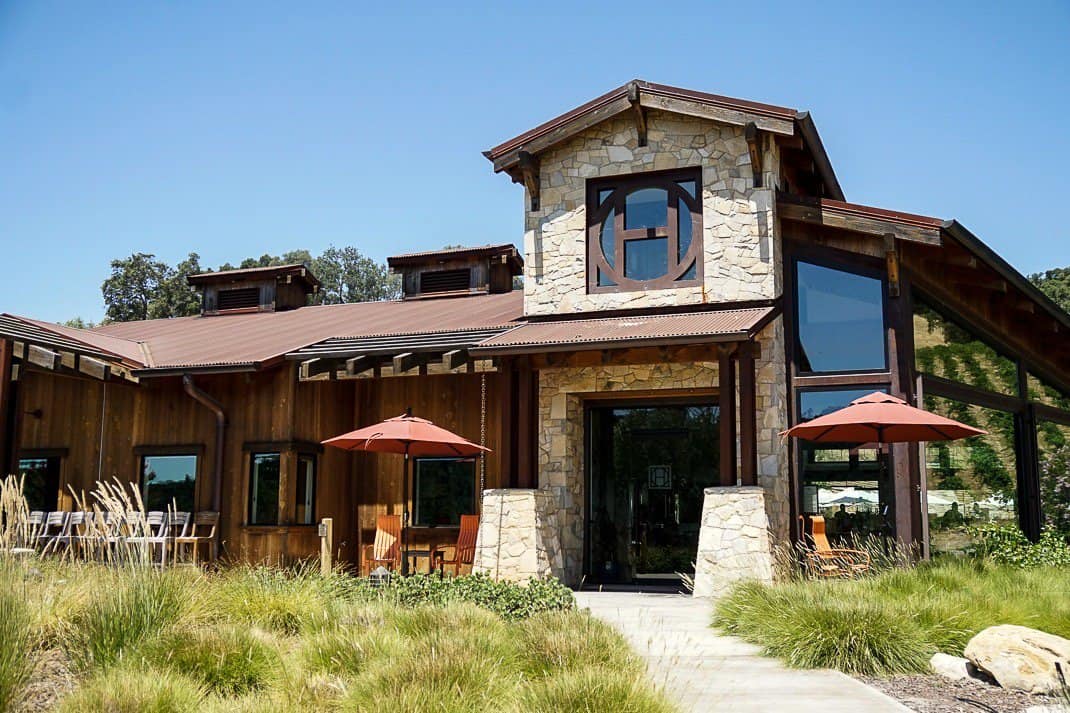
“I grew up here and noticed exponentially we’re getting some really great wines,” Madi said. “It’s gaining speed. It’s getting bigger. We’ve seen a lot more housing tracts are being put up, more wineries. That’s fine. That’s why more people are drawn to the Paso Robles area because it’s a small town feel.”
The problem with American wine is it’s the drink for the middle and upper classes and for people rich enough to not ask “How much?” John said the average age of his winery’s wine club is over 70. American youth still drink primarily to get toasted, not to toast. No U.S. college kid is asking around his frat, “Hey, who wants to join me to taste that new Cab-Petit Verdot blend in town?”
In Italy, kids begin sipping wine at dinner in middle school. They continue to drink for the taste as one of the biggest social faux pas, particularly in Southern Italy, is public drunkenness. Wine is one of Italy’s four major food groups and it’s priced for the low Italian salaries.

Justin
Next we hopped in the car and hit downtown Paso Robles where we dined on salmon and chicken caesar salad at Craft Eatery then went to one of the city’s most exclusive wine bars. Justin was founded in 1981 with its first vintage coming in 1987. It opened its bright and modern wine bar only five years ago.
Its wine tastings are $49 and $80, a reflection of local wineries getting bought by big-name private corporations like Wonderful Company which bought Justin 2010.
“It brings in new influence from different sides of the world and around the United States,” said Jose Uzeta, our server and a sommelier.
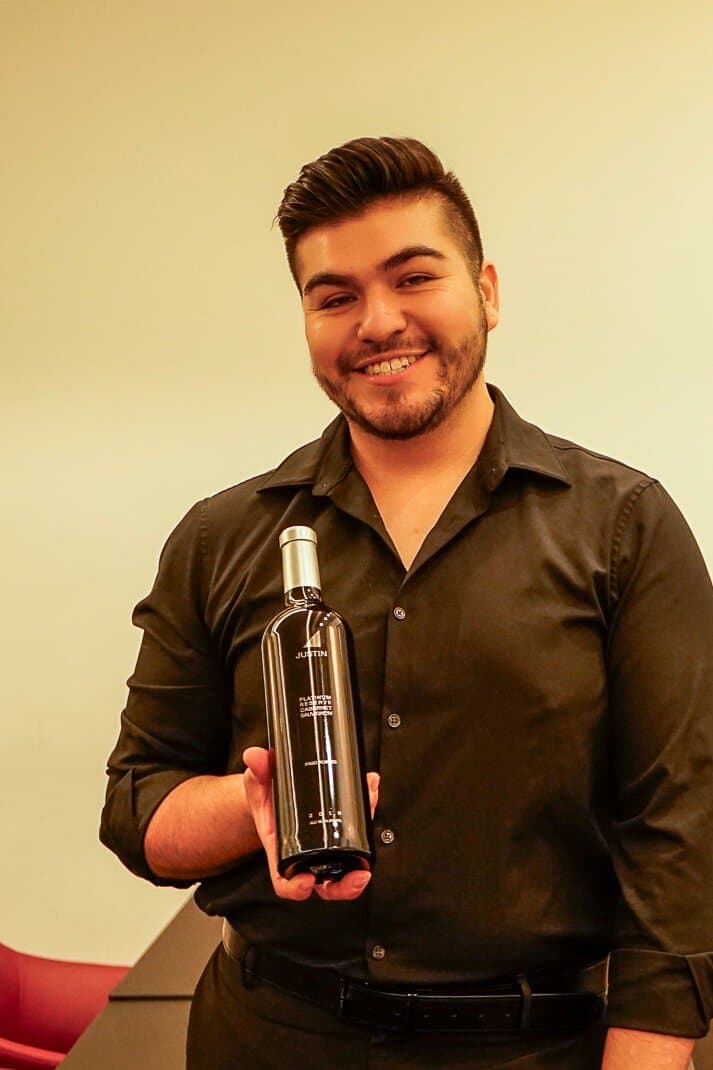
The best bargain on the menu was a 2021 Viognier that retails for only $24 a bottle. It tastes like pears, mild and crisp, perfect with a light fish. The 2021 Reserve Malbec ($50) was rich and wonderful and 100 percent Malbec, the dark purple grape that is so popular in France and Argentina.
But the wine that blew me away was the 2017 Justification. It should. It retails for $150. A blend of Cabernet Franc and Merlot, it had tastes of tobacco and melon and tasted so good I swirled it around my mouth for 10 seconds before swallowing. It impressed the whole table.
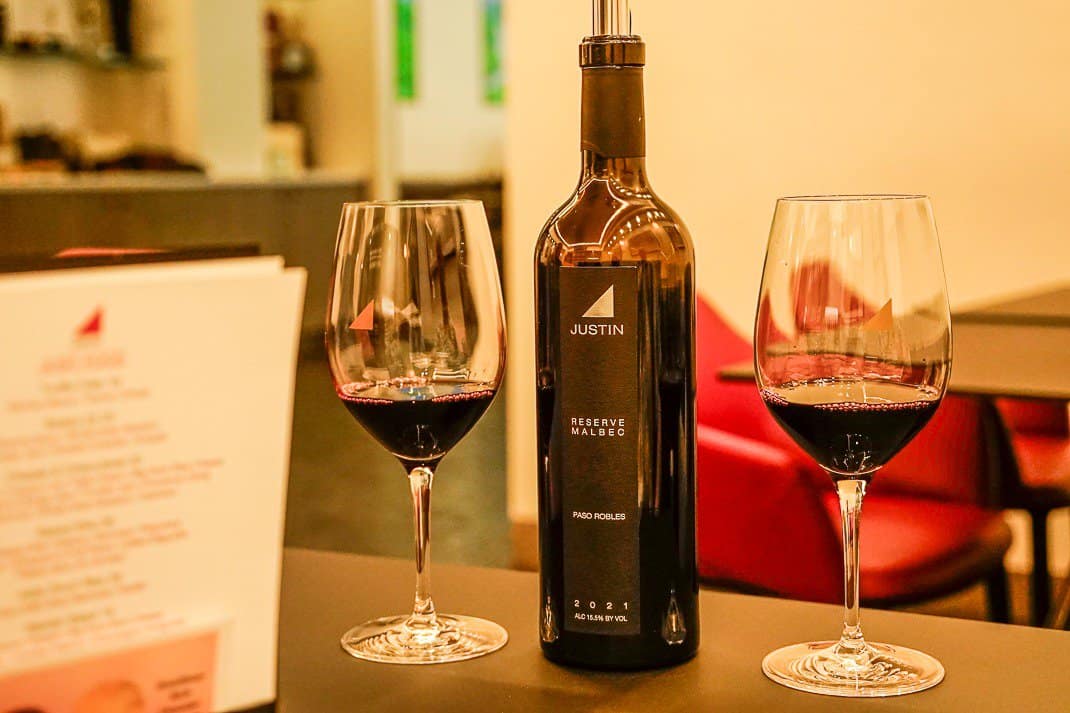
“Should we pay off the mortgage or get a bottle of Justification?” John asked his wife.
I asked Jose why American wines give people more headaches. He said the blends that are so common in California have something to do with it. The 10 tastings over about four hours left me with nothing but good memories. Jose giving John comps for being in the industry was one of the better ones.
I came away incredibly impressed with the California wines I tasted. I also came away incredibly grateful I live in a land where wine is for the masses and not for just the masters.
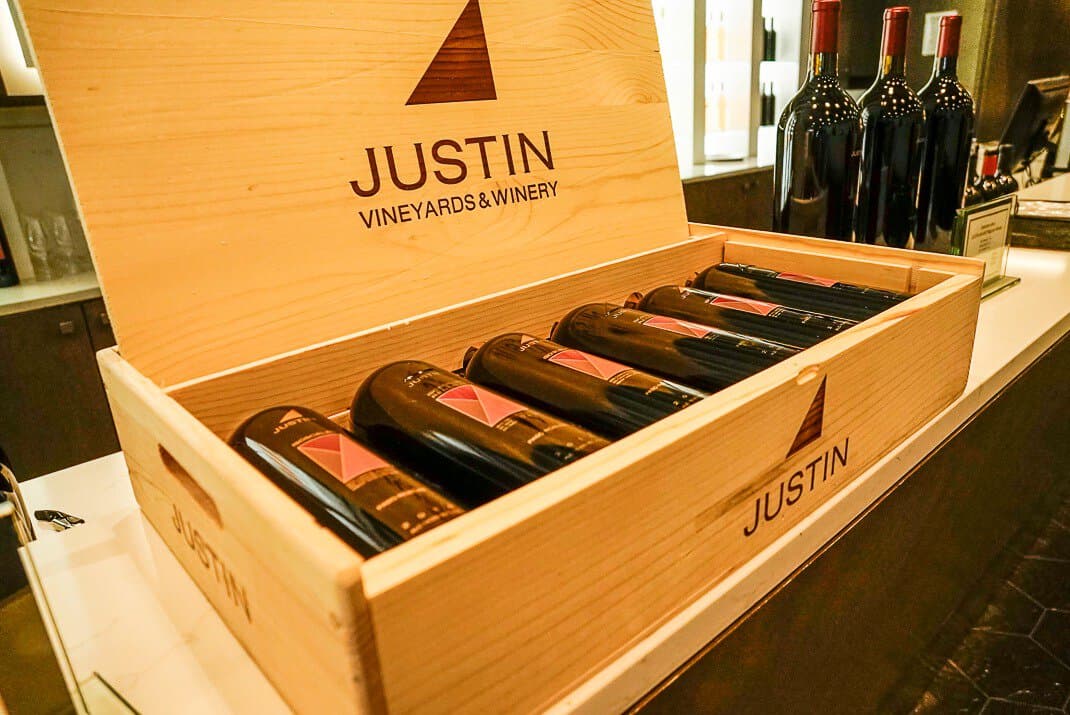
If you’re thinking of going …
Halter Ranch, 8910 Adelaida Rd., Paso Robles, California, 1-805-226-9455, www.halterranch.com, live@halterranch.com, 10:30 a.m.-5 p.m. Sunday-Friday, 10:30-2 p.m. Saturday, wine tastings $35 and $50. Reserve ahead.
Justin, 11680 Chimney Rock Road, Paso Robles, California, 1-805-591-3224, www.juistinwine.com, concierge@justinwine.com, wine tastings $49 and $80. Reserve ahead.
Where to eat: Mistura, 570 Higuera St., San Luis Obispo, California, 1-905-439-3292, https://www.misturarestaurants.com/?y_source=1_MzQyMTUxNTQtNzE1LWxvY2F0aW9uLndlYnNpdGU%3D, info@misurarestaurants.com, 11 a.m.- 9 p.m. Sunday, Tuesday-Thursday, 11 a.m.-10 p.m. Saturday-Sunday. High-end Peruvian restaurant featuring a variety of ceviche, Peruvian sashimi and Peruvian rolls called nikkei maki. Mains range from $33-$50.
For more information: Paso Robles Vistor’s Center, 1225 Park St., 1-805-238-0506, https://www.travelpaso.com/plan-your-trip/visitors-center/, 9 a.m.-5 p.m. Monday-Wednesday, 9 a.m.-6 p.m. Thursday, 9 a.m.-7 p.m. Friday, 10 a.m.-5 p.m. Saturday, 10 a.m.-2 p.m. Sunday.
(Next: General impressions of the United States.)


August 14, 2024 @ 3:19 pm
Great read! I’m wondering why world wine consumption has been down the past few years. Is it prices? Or Gen Z consuming weed instead of wine? Or perhaps both??
August 15, 2024 @ 7:45 pm
I didn’t know consumption had gone down. I think it went up in Italy during Covid for obvious reasons.